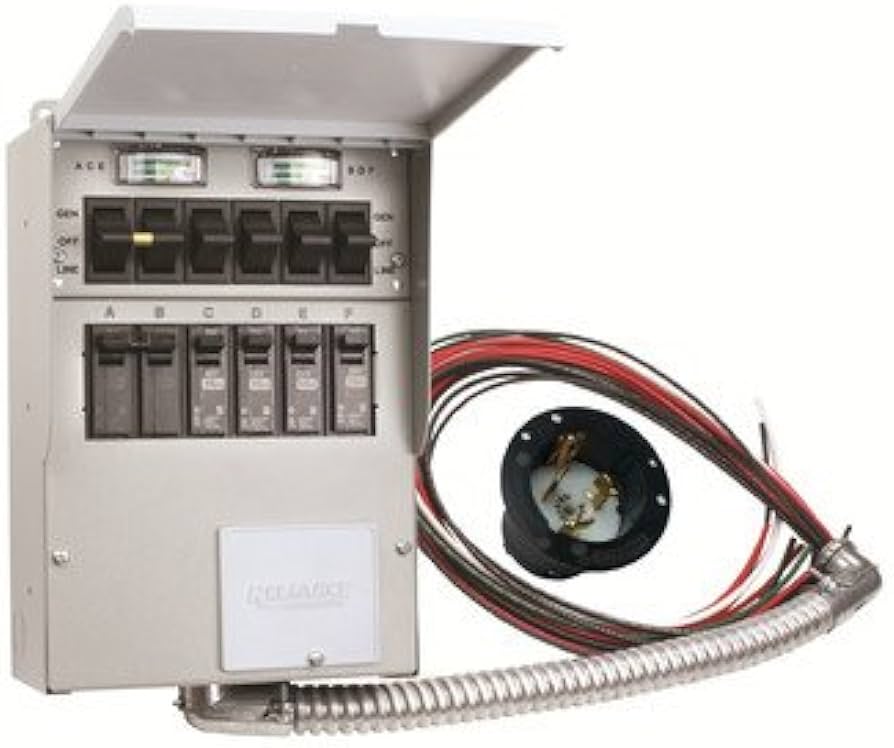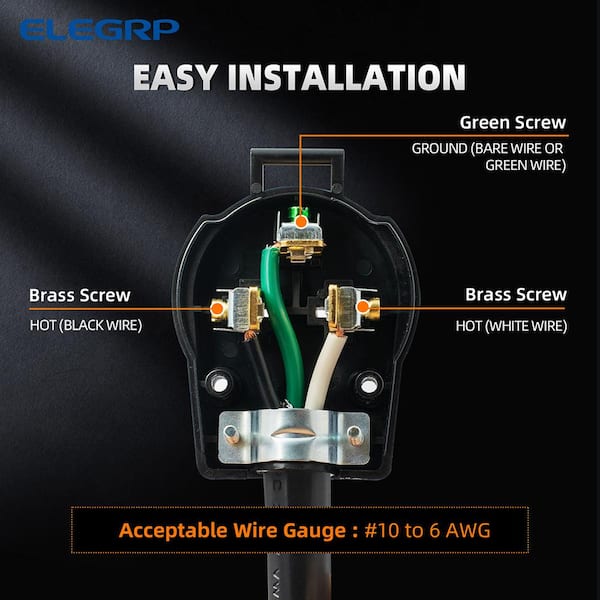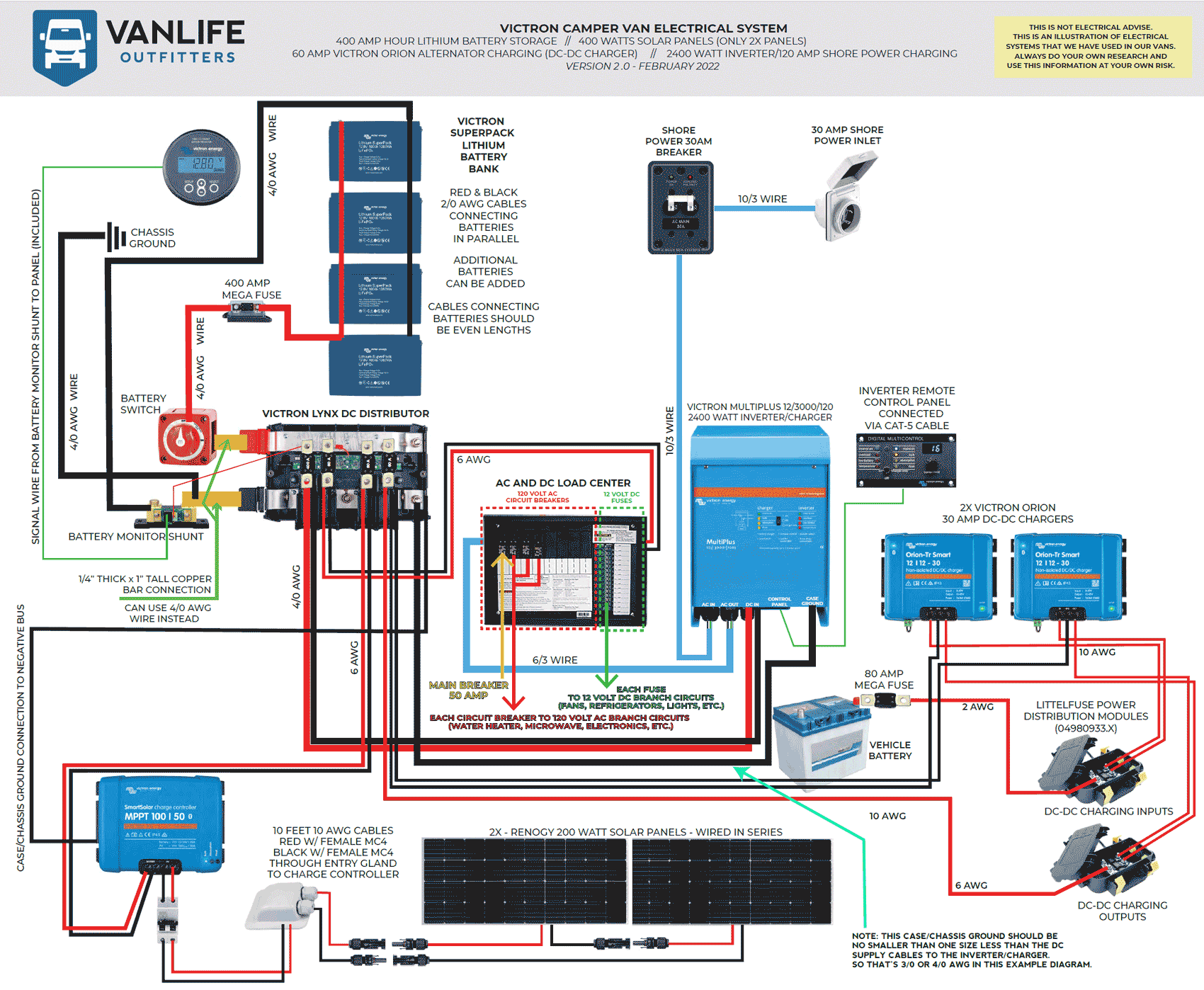The 50 Amp RV plug wiring schematic shows the correct wiring connections for a 50 Amp RV plug. RVs require electrical power to run various appliances and systems.
To supply this power, a 50 Amp RV plug is commonly used. Understanding the proper wiring schematic for a 50 Amp RV plug is essential for safety and functionality. This schematic diagram provides the correct wiring connections for the plug, ensuring that power is distributed correctly and safely throughout the RV.
By following this schematic, RV owners can easily connect their electrical systems to a reliable power source, ensuring a smooth and enjoyable experience while traveling or camping in their RV.


Credit: www.homedepot.com
Understanding The Basics
Understanding the basics of 50 Amp RV plug wiring schematic is essential for a smooth and efficient electrical setup. With a clear understanding of the wiring diagram, RV owners can easily connect their appliances and equipment, ensuring a safe and hassle-free camping experience.
Understanding the Basics: What is a 50 Amp RV Plug? The 50 Amp RV plug is a common electrical plug used to connect RVs to campground power sources. It consists of three prongs and can provide more power than the standard 30 Amp plug. This is important for larger RVs or those with multiple air conditioners and appliances. Importance of Correct Wiring: When it comes to connecting your RV to the campground’s power supply, understanding the correct wiring is crucial. Incorrect wiring can not only cause operational issues but also pose a safety risk. A properly wired 50 Amp RV plug ensures a reliable and consistent power supply, preventing potential damage to your RV’s electrical system. One of the key aspects of correctly wiring a 50 Amp RV plug is understanding the different voltages and grounding requirements. The plug has two hot wires, each carrying 120 volts, and a neutral wire. Additionally, there is a ground wire for safety purposes. To ensure proper wiring, you need to match the voltages and connect the wires accordingly. A common wiring strategy involves connecting one hot wire to the RV’s electrical panel, while the other hot wire is connected to another load in the RV. This balancing of the electrical load helps distribute the power evenly. Moreover, using the correct wire size is essential for handling the high power demands of a 50 Amp RV plug. Using undersized wires can lead to overheating and potentially cause a fire hazard. It is important to refer to the manufacturer’s guidelines or consult a professional electrician to determine the appropriate wire gauge for your specific RV model. In conclusion, understanding the basics of 50 Amp RV plug wiring is crucial for a safe and reliable power connection. Whether you are a seasoned RVer or new to the world of recreational vehicles, ensuring correct wiring is paramount. By adhering to the necessary guidelines and consulting professionals when needed, you can enjoy a worry-free RV experience knowing you have a properly wired 50 Amp RV plug.
Credit: www.amazon.com
Tools And Materials Needed
When it comes to installing a 50 Amp RV plug wiring schematic, it is essential to have the right tools and materials. By having everything you need on hand, you can ensure a safe and efficient installation process. In this section, we will go over the list of tools required and the materials necessary for a safe installation.
List Of Tools Required
Before you begin the installation process, make sure you have the following tools:
- A wire stripper
- A wire cutter
- Needle-nose pliers
- A voltage tester
- A power drill
- A screwdriver set
- Electrical tape
- Wire connectors
- A wire crimping tool
These tools will help you with the various steps required to wire a 50 Amp RV plug. From stripping and cutting wires to connecting them securely, having these tools at your disposal will make the installation process smoother and more effective.
Materials For Safe Installation
In addition to the necessary tools, you will also need specific materials to ensure a safe installation. These materials include:
- A 50 Amp RV plug
- AWG 6/3 electrical wire
- AWG 8/1 electrical wire
- A weatherproof electrical box
- Cable clamps
- Wire nuts
- Outdoor-rated electrical conduit
- Conduit connectors
Using the right materials is crucial for the longevity and safety of your RV plug installation. From the appropriate gauge wire to the necessary connectors and electrical box, these materials provide the foundation for a secure and functional RV power connection.
Safety Precautions
Ensure your safety while working with a 50 amp RV plug wiring schematic by following necessary precautions and guidelines. These measures are essential to prevent accidents and ensure a secure electrical setup.
Safety Precautions Before engaging in 50 Amp RV plug wiring, prioritize safety measures with these crucial tips. “`htmlImportance Of Safety Measures
“` Implement safety guidelines to avert electrical hazards when dealing with RV plug wiring. Tips for Safe Wiring “`htmlTips For Safe Wiring
“` – Ensure disconnecting from power source before commencing any wiring. – Inspect wires for wear and tear to prevent potential malfunction. – Use appropriate tools and materials for secure connection. – Consult professional electrician for complex wiring tasks. Remember, safety is paramount when handling 50 Amp RV plug wiring schematics.
Credit: www.vanlifeoutfitters.com
Step-by-step Wiring Guide
When it comes to wiring a 50 Amp RV plug, a clear and methodical approach is crucial for safety and functionality. Follow these step-by-step instructions to wire your 50 Amp RV plug seamlessly.
Preparing The Work Area
Before beginning the wiring process, it’s essential to prepare the work area to ensure a smooth and safe installation.
- Identify the location for the RV plug installation.
- Gather the necessary tools and equipment, including wire cutters, screwdrivers, and a voltmeter.
- Turn off the power supply to the installation area for safety.
- Ensure proper grounding to prevent electrical hazards.
Connecting The Wires
Once the work area is prepared, proceed with the process of connecting the wires for the 50 Amp RV plug.
- Strip the insulation from the wires and ensure the ends are clean and undamaged.
- Connect the hot wires to the designated terminals, ensuring a secure and tight connection. Use appropriate wire nuts for added safety.
- Connect the neutral wire to its designated terminal, following the manufacturer’s specifications.
- Connect the ground wire to the grounding terminal, ensuring a solid and reliable connection.
- Double-check all the wire connections for accuracy and security before restoring power to the installation area.
Testing And Troubleshooting
Testing and troubleshooting the wiring of a 50 Amp RV plug is essential for ensuring a safe and reliable power supply to your RV. By examining the wiring and understanding common issues, you can identify and resolve potential problems, ensuring that your RV’s electrical system functions optimally. In this section, we will discuss how to test the wiring, common issues, and solutions related to the 50 Amp RV plug wiring schematic.
How To Test The Wiring
To verify the integrity of the 50 Amp RV plug wiring, you can perform the following tests:
- Use a multimeter to check for proper voltage across the hot, neutral, and ground terminals.
- Inspect the wiring for any signs of damage, corrosion, or loose connections.
- Ensure that the wiring connections are secure at the RV power inlet and the circuit breaker panel.
Common Issues And Solutions
When testing and troubleshooting the 50 Amp RV plug wiring, you may encounter several common issues. Here are some common issues along with their solutions:
- Overheating of the plug due to loose connections – tighten all terminals to ensure secure connections.
- Incorrect wiring connections – carefully review the wiring schematic and correct any miswiring.
- Inadequate power supply – verify the power source and ensure it is supplying the correct voltage.
Additional Tips For Installation
Proper Grounding Techniques
Ensure the RV plug is properly grounded to prevent electrical hazards.
Ensuring Compliance With Regulations
Check local electrical codes to guarantee adherence to safety standards.
Frequently Asked Questions On 50 Amp Rv Plug Wiring Schematic
What Are The Necessary Tools For Installing A 50 Amp Rv Plug?
To install a 50 Amp RV plug, you will need a screwdriver, wire stripper, voltage tester, and a drill. It’s also essential to have a wire cutter, electrical tape, and wire connectors for a safe and efficient installation.
How Can I Determine The Proper Wire Gauge For My 50 Amp Rv Plug?
When determining the wire gauge for a 50 Amp RV plug, it’s crucial to consider the length of the wire run and the type of material used. Refer to the National Electrical Code (NEC) guidelines or consult a professional electrician for accurate specifications.
What Safety Measures Should I Consider When Wiring A 50 Amp Rv Plug?
Safety is paramount when wiring a 50 Amp RV plug. Always ensure the power is disconnected, use insulated tools, and double-check the connections. It’s advisable to wear safety gloves and goggles and follow all local electrical codes and regulations for the installation.
Can I Convert A 30 Amp Rv Plug To A 50 Amp Plug?
It’s not recommended to convert a 30 Amp RV plug to a 50 Amp plug. The electrical requirements and wiring configurations differ significantly between the two, and attempting to convert them without proper knowledge and expertise can pose serious safety hazards.
It’s best to install a new 50 Amp RV plug to ensure safety and compliance.
Conclusion
Understanding the 50 Amp RV plug wiring schematic is crucial for safe and efficient RV electrical setups. Proper installation and knowledge of the wiring will prevent accidents and ensure smooth operations. Refer to the schematic guide for a hassle-free RVing experience.
Stay safe, informed, and enjoy your adventures worry-free!
